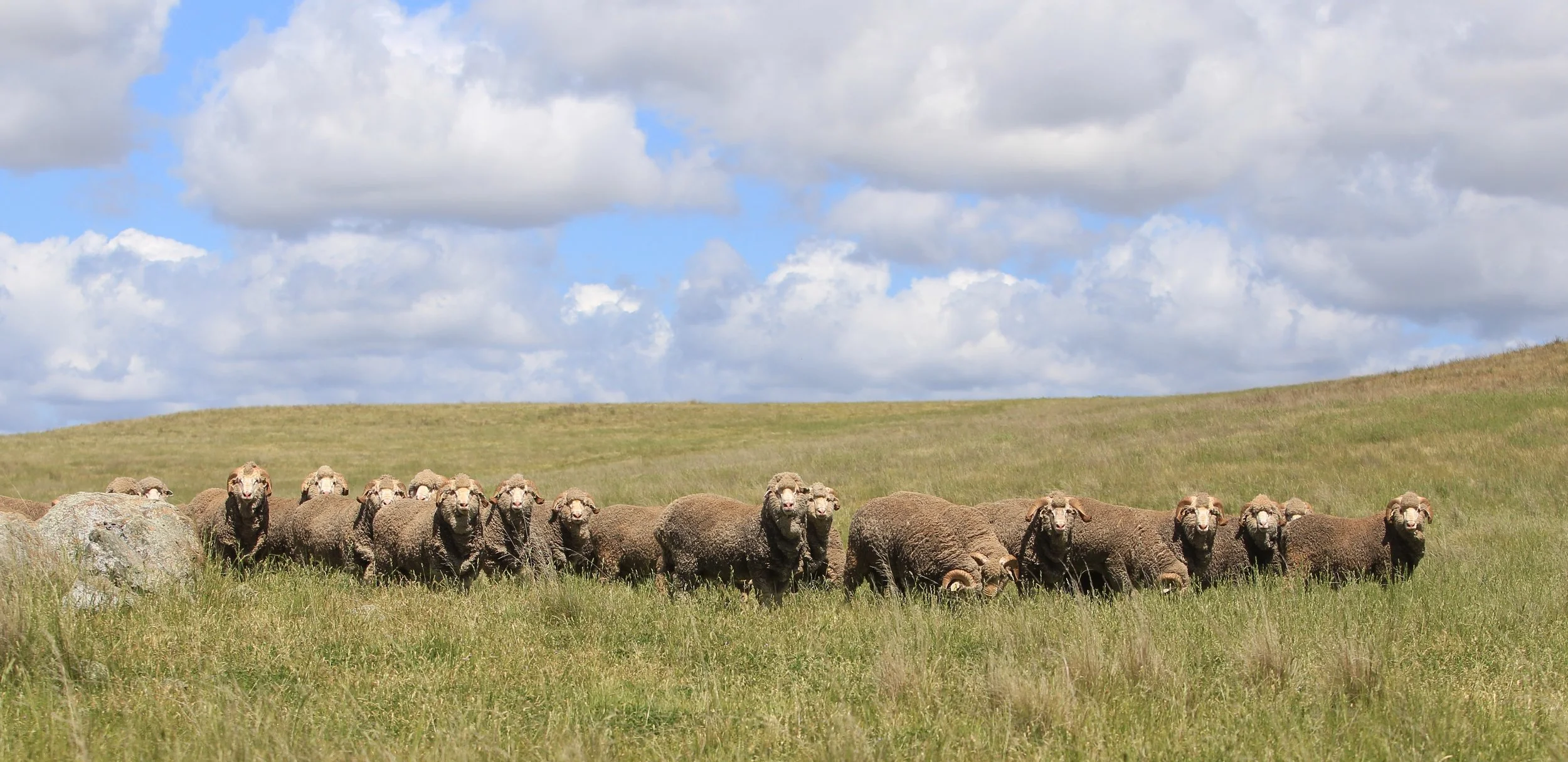Flock History
The Hazeldean Merino stud was founded by James Litchfield in 1865 with the purchase of a draft of sheep, the progeny of pure imported Rambouillet merinos. These sheep were carefully bred until 1879 when a draft of ewes from the flock of David Taylor of St. Johnston, Tasmania were imported together with several high priced rams from the flocks of James Gibson of Belle Vue and W.H.Gibson of Fairfield. Other stud ewes were added and many valuable stud sires subsequently purchased in those early years.
James Litchfield attended the Sydney Sales of 1884 and purchased dense-wooled Golden Tom for 270 guineas along with Sir William for 380 guineas; King Arthur for 100 guineas and Sovereign for 300 guineas.
The progress of the bloodline ran along similar lines to the development of the Peppin strain in the Riverina and indeed occasional introductions of Peppin rams were made for the next 80 years until the flock was closed in 1960.
The original James Litchfield had four sons who operated in partnership as Litchfield Brothers after their father retired. This continued until 1910 when the business partnership was dissolved.
The stud was divided in two, one half retaining the name Hazeldean and taken up by eldest son Arthur James Litchfield who lived at Hazeldean, and the other half named Springwell and transferred to Owen Charles Litchfield of that property.
The two studs ran independently for a period of 27 years until 1937 when grandsons of the founder agreed to a re-unification through the sale of the Springwell stud flock owned by William Owen Litchfield to his cousin James Francis Litchfield of Hazeldean.
Since 1937 the stud has been run under the direction of the James Litchfield family.
Hazeldean's business includes commercial flocks and herds as well as the production of cereal grains however its main interest is the production of superior seedstock. In both cattle and sheep it ranks among the country's largest suppliers and when viewed as a whole, has a major influence on the genetic makeup and progress of Australia's extensive livestock industries.

